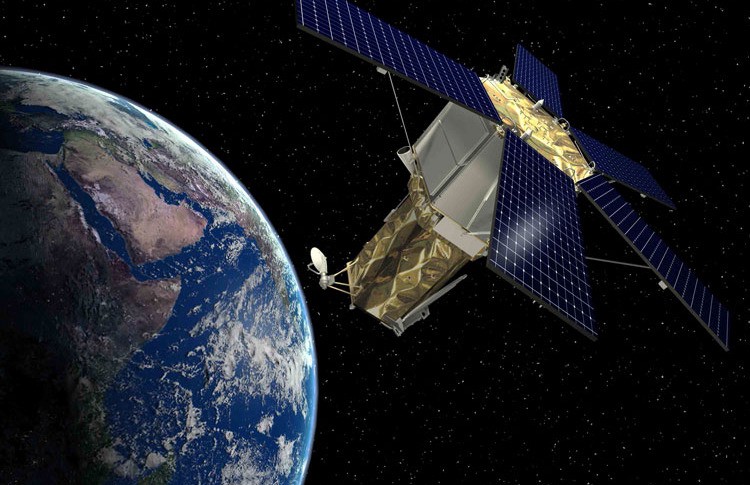
Remote sensing: principles, electromagnetic spectrum, components and applications
Remote sensing, also called earth observation, refers to obtaining information about objects or areas at the Earth’s surface without being in direct contact with the object or area. Humans accomplish this task with aid of eyes or by the sense of smell or hearing; so, remote sensing is day-today business for people. Reading the newspaper, watching cars driving in front of you are all remote sensing activities. Most sensing devices record information about an object by measuring an object’s transmission of electromagnetic energy from reflecting and radiating surfaces.
Principles of remote sensing
Detection and discrimination of objects or surface features means detecting and recording of radiant energy reflected or emitted by objects or surface material. Different objects return different amount of energy in different bands of the electromagnetic spectrum, incident upon it. This depends on the property of material (structural, chemical, and physical), surface roughness, angle of incidence, intensity, and wavelength of radiant energy.
The Remote Sensing is basically a multi-disciplinary science which includes a combination of various disciplines such as optics, spectroscopy, photography, computer, electronics and telecommunication, satellite launching etc. All these technologies are integrated to act as one complete system in itself, known as Remote Sensing System. There are a number of stages in a Remote Sensing process, and each of them is important for successful operation. Progressive stages in remote sensing are as follows:
- Emission of electromagnetic radiation, or EMR (sun/self- emission)
- Transmission of energy from the source to the surface of the earth, as well as absorption and scattering
- Interaction of EMR with the earth’s surface: reflection and emission
- Transmission of energy from the surface to the remote sensor
- Sensor data output
- Data transmission, processing and analysis
At temperature above absolute zero, all objects radiate electromagnetic energy by virtue of their atomic and molecular oscillations. The total amount of emitted radiation increases with the body’s absolute temperature and peaks at progressively shorter wavelengths. The sun, being a major source of energy, radiation and illumination, allows capturing reflected light with conventional cameras and films.
Electromagnetic radiation and Electromagnetic spectrum
EMR is a dynamic form of energy that propagates as wave motion at a velocity of c = 3 x 1010 cm/sec. The parameters that characterize a wave motion are wavelength (λ), frequency (ν) and velocity (c). The relationship between the above is:
c = νλ.
Electromagnetic energy radiates in accordance with the basic wave theory. This theory describes the EM energy as travelling in a harmonic sinusoidal fashion at the velocity of light. Although many characteristics of EM energy are easily described by wave theory, another theory known as particle theory offers insight into how electromagnetic energy interacts with matter. It suggests that EMR is composed of many discrete units called photons/quanta. The energy of photon is
Q = hc / λ
48.3 47.8C117.2 448 288 448 288 448s170.8 0 213.4-11.5c23.5-6.3 42-24.2 48.3-47.8 11.4-42.9 11.4-132.3 11.4-132.3s0-89.4-11.4-132.3zm-317.5 213.5V175.2l142.7 81.2-142.7 81.2z"/> Subscribe on YouTube